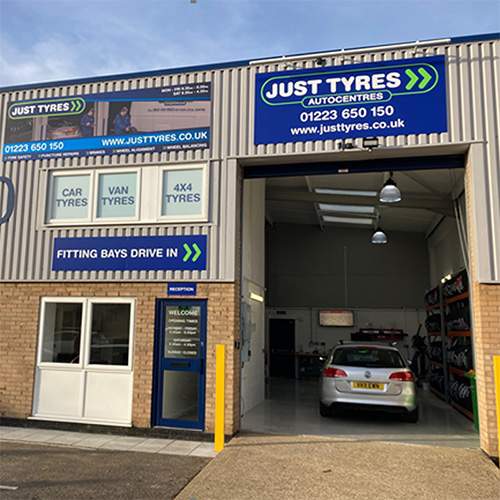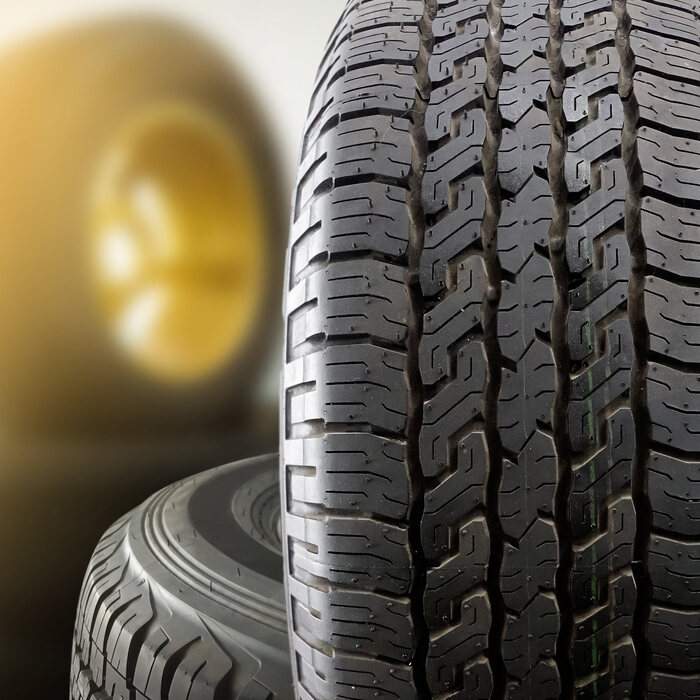CAN YOU DRIVE ON A FLAT CAR TYRE?
The quick answer to the question can you drive on a flat car tyre? is sometimes, but only under very specific circumstances.
Most of the time, unless your vehicle has run flat tyres, you shouldn’t drive your car in the event of a puncture or blowout. Doing so may damage not only your rims, but also your wheel bearings and suspension.
Below is our guide to dealing with a flat car tyre, what to do when you experience one, and when you’re ok to drive on one.
What happens when a tyre goes flat?
Flat tyres can be caused by numerous factors, such as glass, nails or debris in the road. Other times, tyres may experience a blowout or an impact break.
With standard tyres, when you experience a puncture or another type of damage that releases air from the tyre, it will go flat. This may be instant, or it could be over a longer period of time, such as when you have a slow puncture.
When a tyre goes flat and all the air has been released, the only thing protecting the rim from the road is the rubber. The rubber compound your tyres are made from is strong, but not strong enough to allow you to drive on it for long. You shouldn’t drive on a flat for more than a few hundred metres (and only then to ensure you’re stopping somewhere that isn’t a danger to yourself or other drivers).
What to do when you get a flat tyre
The two most common scenarios for experiencing a flat tyre are:
1. Discovering a flat tyre when starting your vehicle
If you have a flat tyre (unless you have run flat tyres) you should be able to tell quickly. The vehicle will be sluggish to handle, sound different, the ride will be bumpy, and you may notice that the vehicle leans to one side.
If you notice any of these issues, stop as soon as you can and check your tyres.
2. Experiencing a flat tyre while driving
Experiencing a puncture while driving is a much more obvious and frightening experience than discovering one when returning to your vehicle.
You may hear a popping or bursting sound, and the car may momentarily lose traction on the road. It’s important to remain calm, keep both hands on the steering wheel, and resist the urge to brake suddenly - especially when driving on a fast road, such as the motorway.
Allow the car to come to a slow and controlled stop, ensuring you continue to use your mirrors and signal.
This is the only time it’s recommended that you drive on a flat tyre; to ensure that you’re not stopping suddenly in a dangerous location. However, you shouldn’t drive for a prolonged period, for example, to the nearest services if you experience a flat tyre on the motorway. Instead, stop the vehicle on the hard shoulder.
Is driving on a flat tyre bad?
If you drive on a flat tyre for more than a few hundred metres, you could potentially damage the rims or the suspension. A flat tyre will also compromise the grip the tyre has on the road, as well as handling.
If you do have to drive on a flat tyre, make sure you drive in a slow and controlled way, remaining vigilant of other drivers who might not be aware of your situation.
When is it ok to drive on a flat tyre?
As mentioned, you should only drive a short distance on a flat tyre to ensure you’re not stopping in a potentially dangerous place.
If your vehicle does have run flat tyres, then you’ll be able to drive on a flat tyre for considerably longer.
What are run flat tyres?
Run flat tyres have a reinforced sidewall that allows them to support the weight of your vehicle in the event of a puncture. Your vehicle's Tyre Pressure Monitoring System (TPMS) will alert you when there’s a drop in air pressure, which can mean that you’ve experienced a puncture.
If you do have a puncture, you will be able to drive on the flat tyre for a certain distance, meaning you don’t have to change the tyre or wait for roadside assistance.
Most run flat tyres do have limitations on speed and distance for driving on when flat, which you will be able to check in your vehicle’s handbook.
Once a run flat tyre does experience a puncture or damage, due to the weakening of the internal structure, you will have to have the tyre replaced, rather than fixed.
Can I use run flat tyres?
You’re only able to fit run flat tyres to your vehicle if it uses a TPMS. This is because drivers of vehicles that don’t have a TPMS won’t be alerted when the tyre goes flat, and therefore won’t be able to tell if and when a puncture occurs.
Run flat tyres are now fitted as standard on most new vehicles. If you’re unsure about whether your vehicle uses them, check your handbook for more information.
How to avoid getting a flat tyre
Sometimes it’s not possible to avoid a flat tyre, but there are several ways we can maintain our tyres to help prevent unnecessary damage:
- Check your tyres every two weeks, including the treads and sidewall (both inside and outside) for the damage, and that they’re the correct air pressure advised in your handbook
- Rotating your tyres can prevent uneven wear, and also gives you the opportunity to check the inside sidewall for damage
- Safe driving - such as by avoiding potholes and not hitting the kerb - will prevent impact breaks
- Ensure you don’t overload your vehicle by exceeding the load index
How to fix a flat tyre
More often than not, with non-run flats, punctures can be fixed - particularly if it occurs in the central part of the tyre.
If you’re not experienced at fixing car tyre punctures, it’s recommended that you don’t attempt to do it yourself. Instead, speak to a tyre expert - such as those at your local Just Tyres - who will be able to help.
How to change a flat tyre
Knowing how to fix a flat tyre is a useful skill, as it can help you in the event of a puncture and means you don’t need to rely on calling for roadside assistance.
For more information, check out our guide on how to safely change a flat car tyre.
Need new tyres?
If your tyre needs replacing, we have a wide range of tyres available from major brands to suit all budgets. Simply enter your vehicle reg into our quick and easy tool to buy tyres online today.



 Same Day Fitting. Order By 10:30am
Same Day Fitting. Order By 10:30am
 51 Nationwide Fitting Centres
51 Nationwide Fitting Centres
 5 Year Warranty On All Tyres
5 Year Warranty On All Tyres
 Price Check Promise. Always Great Deals
Price Check Promise. Always Great Deals

 Find a Centre
Find a Centre


